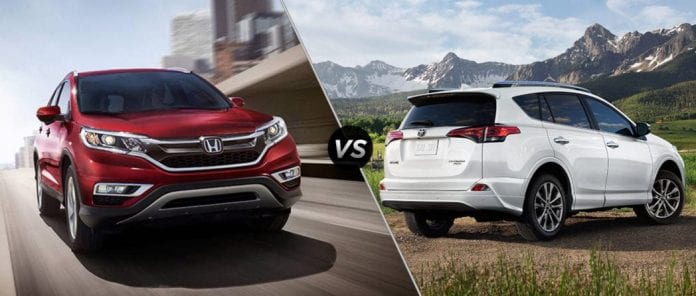If we decide to follow sales of crossovers in 2017, without any doubt, the battle between these two is the one to watch. Their role in two Japanese companies lineup is increasing by the minute because the market and the consumers are shifting toward crossovers’ and its commanding seating position combined with extra cargo space. But this battle is interesting because of one more reason. These two vehicles have been around for decades, and they brought joy to both buyers and their respective companies, and because of that keep reading just to see how these two match up.
1. Safety — Tie
At the Insurance Institute for Highway Safety testing the 2017 Toyota RAV4 received a Top Safety Pick+ rating which is the highest overall rating available. It also performed more than admirably in the National Highway Traffic Safety Administration’s tests receiving an overall five-star rating (out of possible five). The redesigned 2017 Honda CR-V, unfortunately, hasn’t been safety-rated by the IIHS or NHTSA, but its predecessor received a good rating, and the automaker is expecting five-star NHTSA and Top Safety Pick+ IIHS ratings. What actually sets these two apart is the tendency where consumers go for base model trim mostly, and Toyota offers the entire package of safety tech as standard, while Honda offers that similar tech as standard as well, but only with EX and Touring trims, not the base LX.
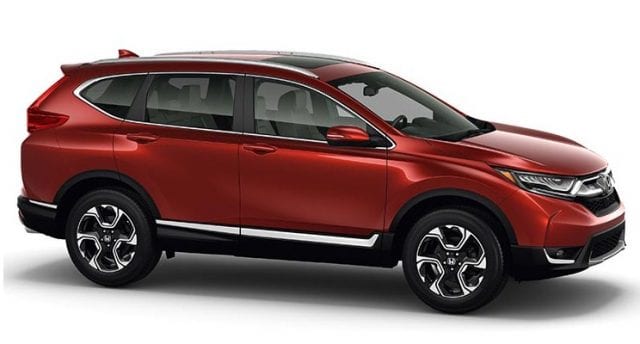
2. Driving Fun — CR-V
If you do not care whether you are driving a hybrid or not, and if you care about sheer driving fun than CR-V is what you need. Although the CR-V is nothing like Mazda CX-5, it is still light on its tires and can hold its own. RAV4’s brings six-speed automatic transmission, and its barely perceptible shifts are OK, but the CVT in Honda is smoother and more responsive.
3. Acceleration — CR-V
What 2017 Honda CR-V has to boast about is its quickness. After some tinkering by the engineers, CR-V Touring’s 1.5 L turbo four is a very satisfying little engine that does a 0-60 MPH sprint in 7.5 seconds, which is more than good from a crossover that isn’t performance oriented. On the other hand, a 2017 Toyota RAV4 SE AWD is considerably slower than Toyota with 0-60 MPH clocked at 8.7 seconds.
4. Efficiency — RAV4
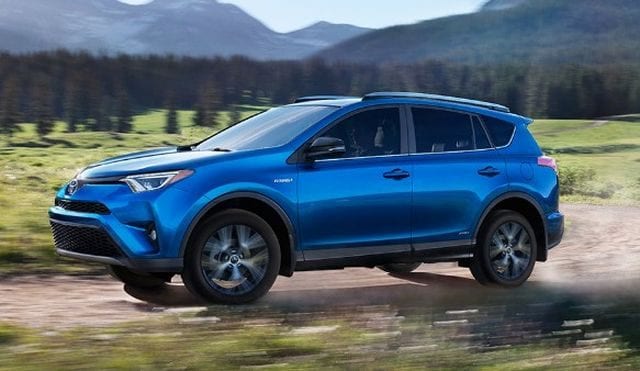
The EPA ratings for RAV4 are actually far bellow of those from the new CR-V with front or all-wheel drive (even with Honda’s 2.4 L naturally aspirated I-4). But when you do some real testing, different results pop up. Turbocharged CR-V fell behind of its EPA ratings in the city, but on the other hand slightly exceeded its EPA highway rating. After real world tests, combined city/highway MPG number was 26.1 for 2017 Honda CR-V, which is still somewhat lower than that of a 2016 RAV4 SE AWD, that returned 26.8 MPG combined. On top of that, Toyota has another trick up its sleeve, and if you are willing to pay a slight premium of $2,200 for a hybrid, you are good for 36.3 MPG combined that test returned, even it is EPA rated at 32 mpg.
5. Interior Layout — CR-V
Since the CR-V is new for 2017 and the RAV4 is only refreshed, it should not come as a surprise that Honda interior looks more modern and upscale from the driver’s seat. The cargo space in between the front seats is expandable and highly flexible, and the center stack of controls is simply more modern. All of that continues as you look up to the digital instrument cluster screen on the CR-V EX and above. A digital speedometer readout is mounted at the top of the screen which only enhances the overall experience. RAV4 offers a couple of interesting interior color combos, but that can’t make up or even come close to the driving environment of the CR-V.
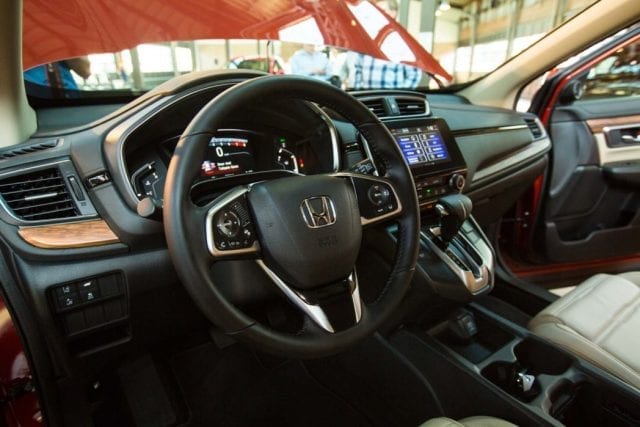
6. Cargo Space and Functionality — CR-V
When you look at functionality and cargo space, you really can’t go wrong with either of these two, especially with their low load floors. The only difference between these two is how difficult is to fold the rear seats (Honda’s seats can fold out of the way from the side doors and with levers in the cargo area). But the official numbers are 38.4 cubic feet of cargo space for the non-hybrid 2017 RAV4 and 39.2 cubic feet for the 2017 CR-V. But if we fold the rear seats the RAV4 will offer 73.4 cubic feet and the CR-V 75.8 cubic feet.
7. Rear Seats — Tie
For those who do not know, or never owned a compact crossover, you will most likely be surprised by how not at all compact they’ve become. Both of these vehicles have comfortable back seats with soft front seat rear segments and barely visible drivetrain humps which just add to the entire roomy look. RAV4’s rear seat back recline feature is much easier to use than that on the CR-V, but on the other hand, rear-seat passengers in the CR-V have their own air vents.
8. The looks – RAV4
When looks are considered the 2017 Honda CR-V front styling is better than ever. The red bow on top of everything is the two tone paint job (blue, black or white over silver trim pieces on the bottom). Thanks to the new 2017 RAV4 Platinum model, the Toyota now also offers a single-color look without the contrasting black lower trim pieces on most other models. Inside, the RAV4 offers an interesting Cinnamon color as well.
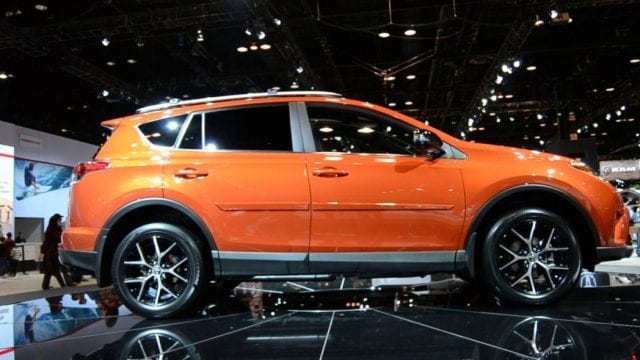
After all of this dear readers, nothing else remains for us but to ask you, on the count of all that you have read here, which one do you like, prefer, or would even own for that matter. The 2017 Honda CR-V wins in four out of eight categories that we have, in two 2017 Toyota RAV4 has the advantage and remaining two segments these vehicles are a tie. Feel free to comment below!
